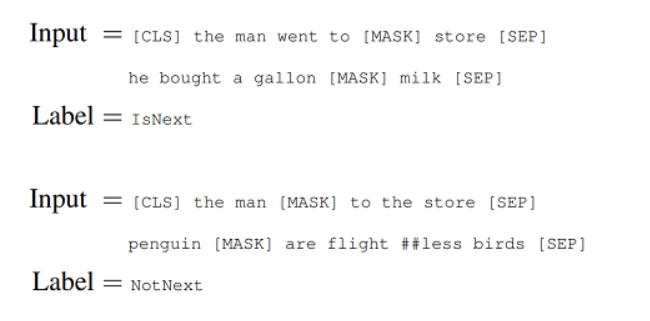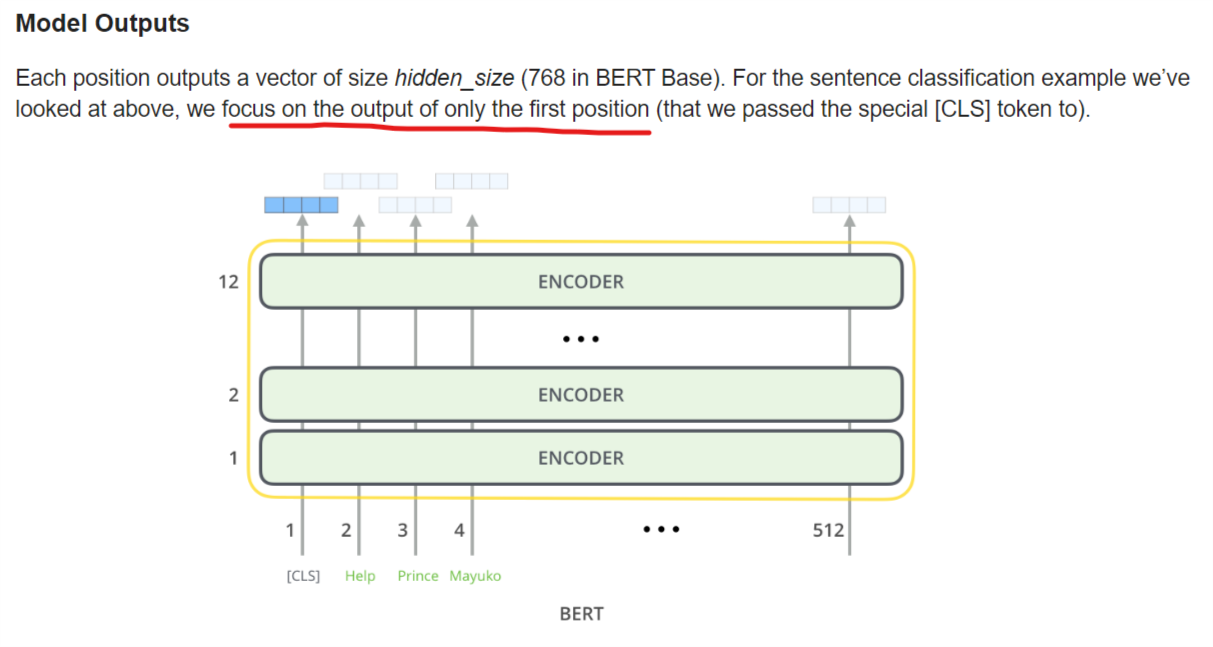如何用BERT的输出做分类?
第一次使用BERT时,发现如果我的输入是[1,512]的形状的 (512个token的index),那么输入就会是[1,512,768],这个时候就麻了,为啥会有512个768呀,虽然说我有512个输入,但是为啥BERT要输出512个768呢,原因目前还不清楚,不过现在知道了第一个768(outputs[0][0])是用来做分类的。
As we have seen earlier, BERT separates sentences with a special [SEP] token. During training the model is fed with two input sentences at a time such that:
- 50% of the time the second sentence comes after the first one.
- 50% of the time it is a a random sentence from the full corpus.
BERT is then required to predict whether the second sentence is random or not, with the assumption that the random sentence will be disconnected from the first sentence:

To predict if the second sentence is connected to the first one or not, basically the complete input sequence goes through the Transformer based model, the output of the [CLS] token is transformed into a 2×1 shaped vector using a simple classification layer, and the IsNext-Label is assigned using softmax.

上面的图片说对于句子分类,我们用[CLS]对应的输出向量(第一个768维度的向量),如果有多个需要预测的目标呢?比如一个句子中有多个MaskedToken,个人觉得可以用MaskedToken所在位置的输出向量(比如,如果MaskToken在遮掩了第三个token,那我们是不是可以用第三个输出向量(output[0][2],并用argmax得到预测结果?)
参考文章:
https://jalammar.github.io/illustrated-bert/
https://medium.com/@samia.khalid/bert-explained-a-complete-guide-with-theory-and-tutorial-3ac9ebc8fa7c



【推荐】国内首个AI IDE,深度理解中文开发场景,立即下载体验Trae
【推荐】编程新体验,更懂你的AI,立即体验豆包MarsCode编程助手
【推荐】抖音旗下AI助手豆包,你的智能百科全书,全免费不限次数
【推荐】轻量又高性能的 SSH 工具 IShell:AI 加持,快人一步
· 分享一个免费、快速、无限量使用的满血 DeepSeek R1 模型,支持深度思考和联网搜索!
· 基于 Docker 搭建 FRP 内网穿透开源项目(很简单哒)
· ollama系列01:轻松3步本地部署deepseek,普通电脑可用
· 按钮权限的设计及实现
· 25岁的心里话